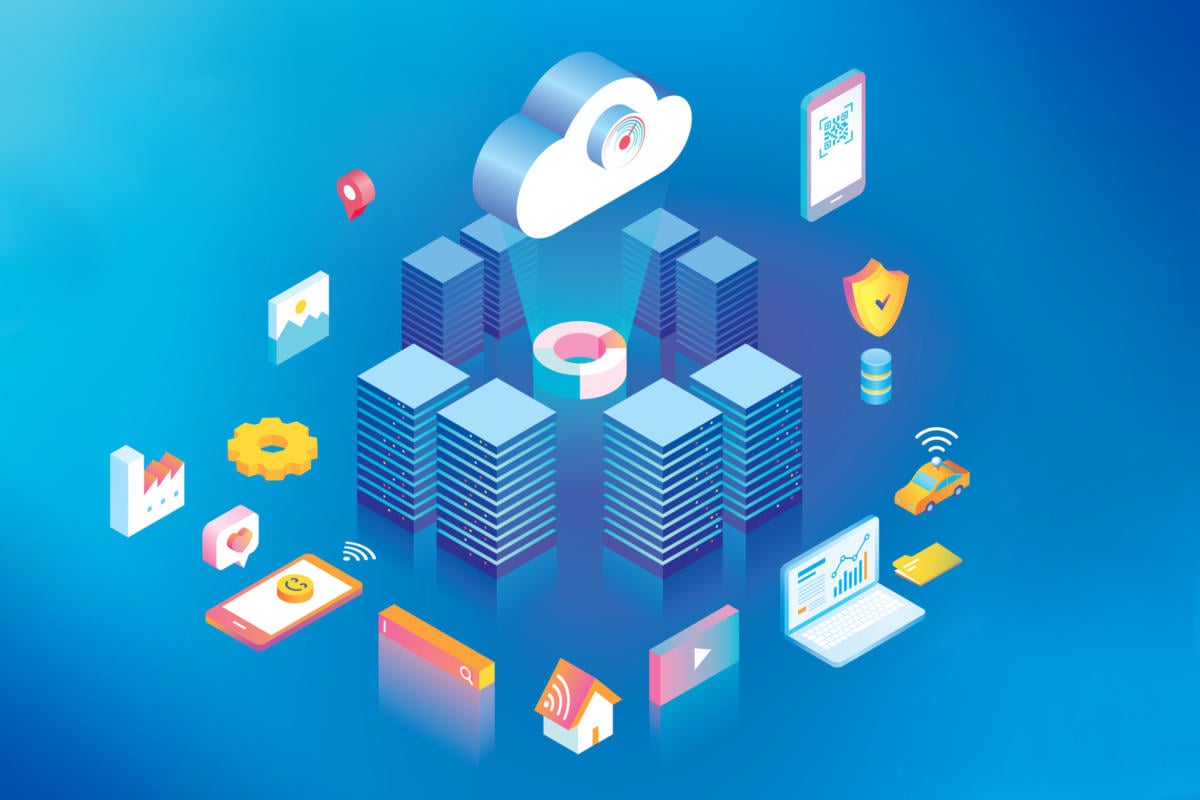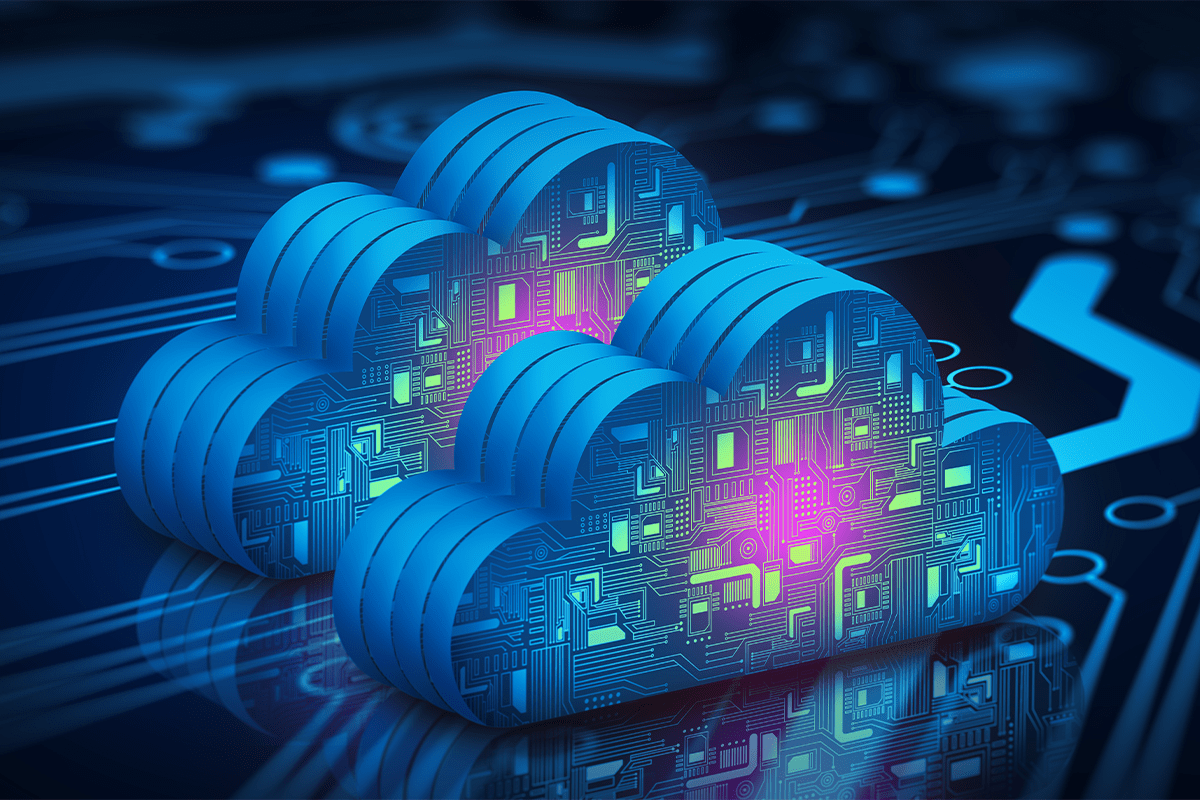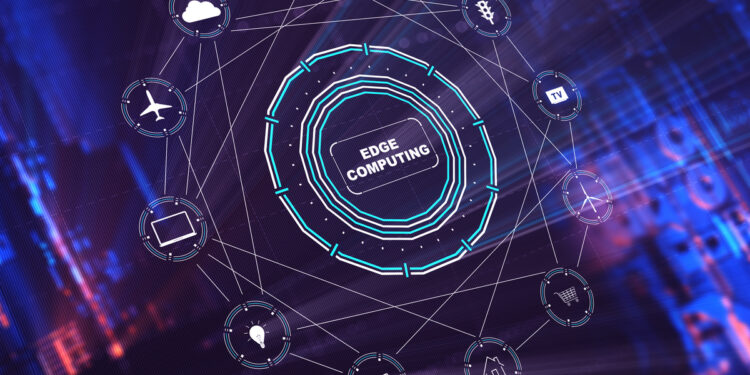In the ever-expanding landscape of digital technology, a new paradigm is emerging that is challenging the traditional, centralized model of cloud computing. Edge Computing Takes Over is the story of this revolution, a shift towards processing data closer to its source, at the “edge” of the network. This change is not just about a new technology; it is a fundamental re-architecture of how we compute, store, and manage data. This article will provide a comprehensive look into the world of edge computing, exploring its core principles, the key drivers behind its explosive growth, and the strategic implications for industries worldwide. We will delve into critical areas such as the Internet of Things (IoT), artificial intelligence (AI), and the new security challenges that are defining this transformative era, offering a deep dive into how edge computing is reshaping our digital world.
The Fundamental Shift From Centralized to Decentralized

For decades, the central nervous system of our digital world has been the cloud, a collection of massive data centers where data is sent for processing and storage. Edge computing is a direct challenge to this model.
A. The Centralized Cloud Model: In the traditional cloud model, a device, such as a smartphone or a factory sensor, collects data and sends it to a distant data center for processing. The result is then sent back to the device. This model works well for many applications, but it has a number of limitations.
- Latency Issues: The round trip for data can be slow, especially for applications that require a real-time response, such as a self-driving car or a remote surgery robot. The time it takes for data to travel from the device to the cloud and back is known as “latency.”
- Bandwidth Limitations: The sheer volume of data being generated by connected devices is overwhelming our networks. Sending all of this data to the cloud is not only expensive but also inefficient.
- Data Security and Privacy: Sending sensitive data to a distant data center can create a security and privacy risk, as the data is vulnerable to a breach as it travels across the network.
B. The Decentralized Edge Model: Edge computing is a decentralized model where data is processed and stored on a local device or a small, local data center, known as an “edge server.”
- Reduced Latency: By processing data closer to its source, edge computing dramatically reduces latency. This is a game-changer for real-time applications that require a sub-millisecond response.
- Bandwidth Efficiency: Edge computing reduces the need to send all data to the cloud. Instead, only a summary of the data or an actionable insight is sent, which significantly reduces bandwidth usage and cost.
- Enhanced Security and Privacy: Edge computing can enhance security and privacy by processing sensitive data locally, without sending it over the network. This is a critical factor for industries like healthcare and finance.
C. The Hybrid Architecture: The future is not a choice between the cloud and the edge; it is a hybrid architecture where the two work together. The edge handles the real-time, mission-critical data, and the cloud is used for long-term storage, deep analytics, and training AI models. This hybrid model offers the best of both worlds, with the speed and efficiency of the edge and the scalability and power of the cloud.
The Key Drivers of Edge Computing’s Rise
The explosive growth of edge computing is not a random phenomenon. It is a direct response to the demands of a new generation of technologies and business models.
A. The Internet of Things (IoT): The proliferation of IoT devices, from smart home appliances to industrial sensors, is a major driver of edge computing.
- Massive Data Generation: IoT devices are generating an unprecedented amount of data. Sending all of this data to the cloud is not feasible. Edge computing allows this data to be processed locally, with only a summary of the data being sent to the cloud.
- Real-Time Control: Many IoT applications, such as a smart factory or a smart grid, require real-time control. Edge computing is the only way to achieve the low latency that is needed for these applications.
B. Artificial Intelligence (AI): The future of AI is not just in the cloud; it is also at the edge.
- Edge AI: AI models can be trained in the cloud and then deployed to an edge device for real-time inference. For example, a security camera can use an AI model to detect a threat without sending the video feed to the cloud. This is more efficient, more secure, and more private.
- AI and IoT: The combination of AI and IoT is a powerful force for innovation. Edge computing is the glue that brings these two technologies together, allowing them to work in a seamless and efficient way.
C. 5G and High-Speed Networks: The rollout of 5G networks is a major enabler of edge computing.
- Low Latency: 5G networks are designed to have extremely low latency, which is a perfect match for edge computing applications that require a real-time response.
- Increased Bandwidth: The increased bandwidth of 5G networks allows for more data to be processed at the edge and for more devices to be connected to the network.
D. The Push for Data Privacy: The growing concern over data privacy, and the implementation of regulations like GDPR and CCPA, is a major driver of edge computing.
- Local Processing: Edge computing allows for sensitive data, such as a patient’s medical information or a customer’s financial data, to be processed locally, without sending it to a distant data center. This can significantly reduce the risk of a data breach and help a company to stay in compliance with privacy regulations.
- Data Sovereignty: Edge computing can also help a company to meet data sovereignty requirements, which are laws that require data to be stored and processed within a specific country’s borders.
Key Areas of Edge Computing’s Impact

The impact of edge computing is not confined to a single industry; it is transforming a wide range of fields, from manufacturing to healthcare and transportation.
A. Manufacturing and the Smart Factory: Edge computing is at the heart of the “smart factory” revolution.
- Real-Time Monitoring: Sensors on the factory floor can use edge computing to monitor the performance of a machine in real time, detecting a problem before it leads to a costly shutdown.
- Predictive Maintenance: AI models can be deployed to the edge to analyze the data from these sensors and to predict when a machine is likely to fail, allowing for a more proactive and efficient maintenance schedule.
- Robotics and Automation: Edge computing is essential for robotics and automation on the factory floor, as it provides the low latency that is needed for a robot to make a real-time decision.
B. Healthcare and Remote Patient Monitoring: Edge computing is transforming healthcare by enabling new forms of remote patient monitoring and diagnostics.
- Wearable Devices: Wearable devices, such as a smart watch or a heart monitor, can use edge computing to analyze a patient’s health data in real time, sending an alert to a doctor only when a problem is detected.
- Remote Surgery: Edge computing is essential for remote surgery, as it provides the low latency that is needed for a surgeon to operate on a patient from a distant location. This technology could one day make a surgeon’s expertise available to patients in rural areas or in countries with a shortage of medical experts.
C. Transportation and Autonomous Vehicles: The self-driving car is a prime example of an edge computing application.
- Real-Time Decision Making: A self-driving car generates a massive amount of data from its cameras and sensors. This data must be processed in real time to make a split-second decision, such as when to brake or to swerve to avoid a collision. Edge computing is the only way to achieve the low latency that is needed for this mission-critical task.
- Vehicle-to-Vehicle Communication: Edge computing can also be used to enable vehicle-to-vehicle communication, allowing a car to communicate with other cars and with the surrounding infrastructure. This can help to prevent accidents and to improve the flow of traffic.
D. Retail and the In-Store Experience: Edge computing is transforming the retail experience by enabling new forms of in-store analytics and personalization.
- In-Store Analytics: Sensors in a store can use edge computing to monitor customer traffic and behavior, providing a retailer with a new level of insights into how customers are shopping.
- Personalized Marketing: Edge computing can be used to deliver personalized marketing and promotions to a customer’s phone as they walk through a store, which can help a retailer to increase sales and to improve the customer experience.
The New Challenges of Edge Computing
While edge computing offers a host of benefits, it also introduces a new set of challenges that businesses must be prepared to address.
A. Security and the Distributed Attack Surface: Edge computing creates a distributed attack surface, as a company’s data and applications are no longer confined to a single, secure data center.
- Physical Security: The physical security of an edge server, which may be located in a remote or unsecured location, is a new challenge. An attacker could, for example, physically steal a server or a device to gain access to a company’s data.
- Patching and Management: The patching and management of thousands or even millions of edge devices is a significant challenge. A security vulnerability in a single device could be exploited by an attacker to compromise the entire network.
B. Management and Operational Complexity: The management of a distributed network of edge devices and servers is a new and complex task.
- A New Operational Model: A company must develop a new operational model for managing its edge infrastructure, which includes a new set of tools and a new team of experts.
- Lack of Standardization: The lack of standardization in the edge computing market is a major challenge. Each vendor has its own set of tools and technologies, which can make it difficult for a company to integrate a variety of different edge devices.
C. Cost Management: While edge computing can reduce bandwidth costs, it can also introduce a new set of cost challenges.
- Upfront Investment: The upfront investment in edge hardware and infrastructure can be significant.
- Operational Costs: The operational costs of managing a distributed network of edge devices can also be significant. A company must have a clear cost management strategy to ensure that its edge computing investment is paying off.
D. The “Edge” vs. the “Cloud” Dilemma: The legal and ethical implications of processing data at the edge vs. in the cloud are a new challenge.
- Data Privacy: The legal landscape is still grappling with what happens when a company processes data at the edge. Are the same privacy regulations that apply to the cloud also applicable to the edge?
- Accountability: If an AI model that is running on an edge device makes a decision that causes harm, who is liable? Is it the developer? The company that owns the device? The law is still grappling with these questions.
The Future of Edge Computing
The future of edge computing is a story of new paradigms and new opportunities. As the technology matures, it will be integrated with other cutting-edge technologies to create a new generation of applications and business models.
A. Edge and Blockchain: The combination of edge computing and blockchain technology is a powerful force for innovation.
- Decentralized Trust: Blockchain can be used to create a decentralized and trustworthy network of edge devices, allowing them to communicate and share data in a secure and transparent way.
- Supply Chain Transparency: The combination of edge computing and blockchain can be used to create a more transparent and secure supply chain, allowing a company to track a product from its origin to its final destination.
B. Edge and 6G: The future of edge computing will be defined by its integration with the next generation of mobile networks, 6G.
- Ultra-Low Latency: 6G networks are designed to have ultra-low latency, which will enable a new generation of real-time applications, such as remote surgery and virtual reality, that were not possible with 5G.
- A New Network Architecture: The combination of 6G and edge computing will create a new network architecture where computing is a distributed, ubiquitous resource.
C. The Role of Open Source and Standardization: The future of edge computing will be defined by the push for open source and standardization.
- Interoperability: The lack of standardization is a major challenge. The push for open source and standardization will make it easier for a company to integrate a variety of different edge devices and technologies.
- A New Ecosystem: The future will see the rise of a new ecosystem of open source edge computing platforms, tools, and services.
D. The Legal and Ethical Imperatives: The future of edge computing will be defined by the need to create a new legal and ethical framework for this technology.
- Data Governance: The legal system must develop a framework for data governance at the edge, including new laws on data privacy, security, and accountability.
- Ethical AI: The ethical implications of AI at the edge, such as the use of AI in a self-driving car or a security camera, are a new and critical area of legal and ethical debate.
Conclusion
Edge Computing Takes Over is a story of a new era of computing, one that is more decentralized, more efficient, and more responsive. The challenges are immense, from the security of a distributed attack surface to the legal liability of an autonomous AI. However, the opportunity is even greater: to build a more resilient, more secure, and more innovative digital world. The decisions we make today will not only shape the future of edge computing but also define our relationship with data, technology, and the very concept of a digital business. The future of computing is here, and it is a new era of decentralized innovation, technological adaptation, and a deep commitment to building a network that is designed for the future.












